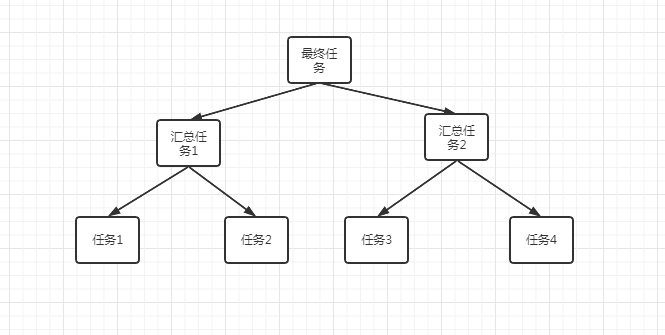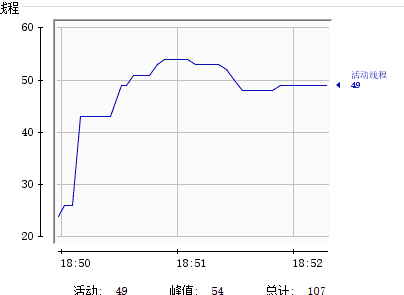Java中关于CompletableFuture类的思考
最近遇到了一个OOM的问题,提示的是无法创建更多的线程,定位问题,发现是类似下面的这段代码出现了问题,用JConsole监测,发现某一时段线程数量忽然飙升,由此引发了下面的思考
情景再现
public class DemoController {
private ExecutorService executorService = Executors.newWorkStealingPool(20);
@RequestMapping("/test")
public String test() {
ExecutorService forkJoinPool = Executors.newWorkStealingPool(10);
CompletableFuture[] completableFutures = new CompletableFuture[600];
for (int i = 0; i < 600; i++) {
int j = i;
completableFutures[i] = CompletableFuture.runAsync(() -> {
getAssociatedInfo(forkJoinPool);
}, forkJoinPool);
}
CompletableFuture<Void> voidCompletableFuture = CompletableFuture.allOf(completableFutures);
voidCompletableFuture.join();
return "OK";
}
public String getAssociatedInfo(ExecutorService service) {
CompletableFuture<String> trialAssociatedInfoCompletableFuture
= CompletableFuture.supplyAsync(() -> {
try {
System.out.println("按理说你已在运行,不是吗");
TimeUnit.SECONDS.sleep(100);
System.out.println("你已经完成了");
} catch (InterruptedException e) {
e.printStackTrace();
}
return "a";
}, executorService);
CompletableFuture<Void> voidCompletableFuture = CompletableFuture.allOf(trialAssociatedInfoCompletableFuture);
voidCompletableFuture.join();
return "ok";
}
}
复制代码

在这段代码中,http线程启600个任务,使用自定义的线程池并发数量为10个。每一个任务启一个子任务,使用类定义的线程池,并发数量为20个。在我的理解中,按理说最多多三十多个线程数量才对,但是短时间内居然飙升好几百,那么这几百个线程到底是如何产生的呢?在研究了源代码之后,终于理解了其中的奥秘。
代码探究
completableFutures[i] = CompletableFuture.runAsync(() -> {
getAssociatedInfo(forkJoinPool);
}, forkJoinPool);
复制代码
这一句的作用是启异步任务,交由forkJoinPool线程池管理,当线程池数量不足10个时,启动一个线程,立即执行,当超过10个时,加入任务队列。
CompletableFuture<Void> voidCompletableFuture = CompletableFuture.allOf(completableFutures); 复制代码
allOf的作用是递归地构造完成树,汇总并返回成一个总任务,如下图所示:

这里的任务1、任务2等就是我们前面定义的任务,每个任务对象存储着一个结果,当最终任务有结果时,必须要下面的汇总任务都有结果,进而每一个定义的任务都要有结果,通俗来说,就是对voidCompletableFuture的管理即为对所有定义任务的管理。
// 从多线程的角度,若任务未完成,会阻塞
voidCompletableFuture.join();
return "OK";
CompletableFuture->join():
return reportJoin((r = result) == null ? waitingGet(false) : r);
CompletableFuture->waitingGet():
Signaller q = null;
boolean queued = false;
int spins = -1;
Object r;
// 当返回任务不为空,循环结束
while ((r = result) == null) {
if (spins < 0)
spins = (Runtime.getRuntime().availableProcessors() > 1) ?
1 << 8 : 0; // Use brief spin-wait on multiprocessors
else if (spins > 0) {
if (ThreadLocalRandom.nextSecondarySeed() >= 0)
--spins;
}
else if (q == null)
// 实例化一个信号量 --1
q = new Signaller(interruptible, 0L, 0L);
else if (!queued)
queued = tryPushStack(q);
else if (interruptible && q.interruptControl < 0) {
q.thread = null;
cleanStack();
return null;
}
else if (q.thread != null && result == null) {
try {
// 若迟迟没有返回结果,最终会走到这个方法中,下面是ForkJoinPool对信号量的管理
ForkJoinPool.managedBlock(q);
} catch (InterruptedException ie) {
q.interruptControl = -1;
}
}
}
ForkJoinPool->managedBlock():
Thread t = Thread.currentThread();
if ((t instanceof ForkJoinWorkerThread) &&
(p = (wt = (ForkJoinWorkerThread)t).pool) != null) {
WorkQueue w = wt.workQueue;
while (!blocker.isReleasable()) {
//
if (p.tryCompensate(w)) { // --2
try {
do {} while (!blocker.isReleasable() &&
!blocker.block());
} finally {
U.getAndAddLong(p, CTL, AC_UNIT);
}
break;
}
}
}
else {
do {} while (!blocker.isReleasable() &&
!blocker.block());
}
ForkJoinPool->tryCompensate(): // --2
canBlock = add && createWorker(); // throws on exception
复制代码
- 获取当前线程,判断其类型,如果当前线程是非forkJoin线程的话,那么走else方法,直到返回结果为止;
- 如果是forkJoin线程的话,当执行2处的代码时,还会进行一系列复杂的判断,若仍然迟迟得不到返回结果,会新建一个线程,帮助执行线程池里的任务。多出来的那几百个线程确实出自于此;
CompletableFuture->Signaller->Signaller(): // --1
Signaller(boolean interruptible, long nanos, long deadline) {
// thread变量是当前线程
this.thread = Thread.currentThread();
this.interruptControl = interruptible ? 1 : 0;
this.nanos = nanos;
this.deadline = deadline;
}
复制代码
反思
到第一个voidCompletableFuture.join(),该线程是http线程,由forkJoinPool线程池管理,最多10个线程并行,然后到waitingGet(),由于其不是forkJoin线程,因此走的是else方法
到第二个voidCompletableFuture.join(),该线程是forkJoinPool执行的任务,每一个任务都会执行一次getAssociatedInfo方法,由executorService线程池管理,最多20个线程并行,然后到waitingGet(),由于它是forkJoin线程,所以会新建一个线程,帮助执行forkJoinPool线程池里的任务,然而受到executorService线程池数量的制约,即使线程数多了,也不能加快执行,随着越来越多getAssociatedInfo方法的Join,导致了线程数量的飙升,又不能即时释放,最终导致了OOM的发生
解决方案
猜想:将http线程的任务与forkJoinPool线程池的任务放在同一线程池,这样每当forkJoinPool线程池新产生一个线程时,都能窃取到任务从而执行,并且随着线程数量的上升,越来越多的任务被执行,这样就减少了线程创建的数量。最终的结果果然如此












![[HBLOG]公众号](https://www.liuhaihua.cn/img/qrcode_gzh.jpg)

